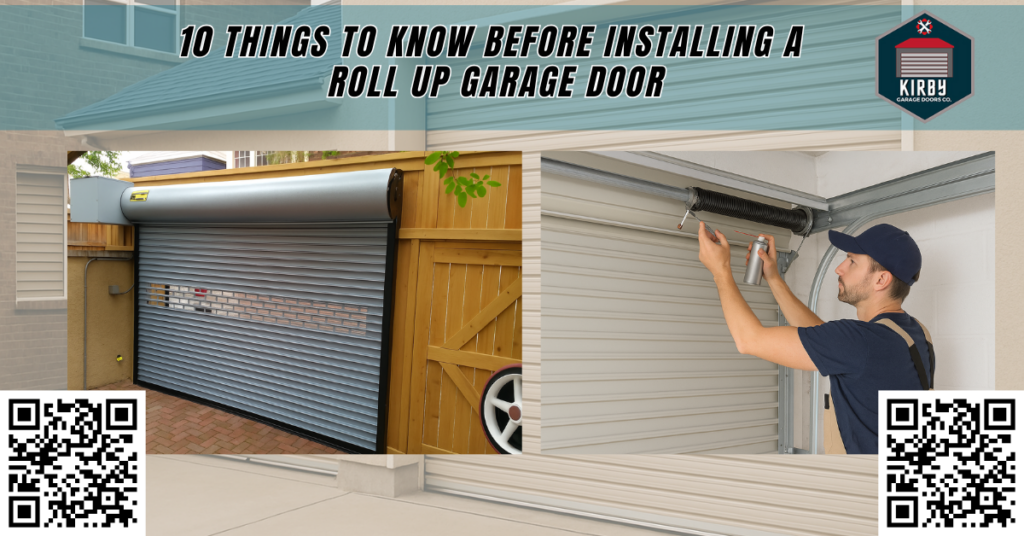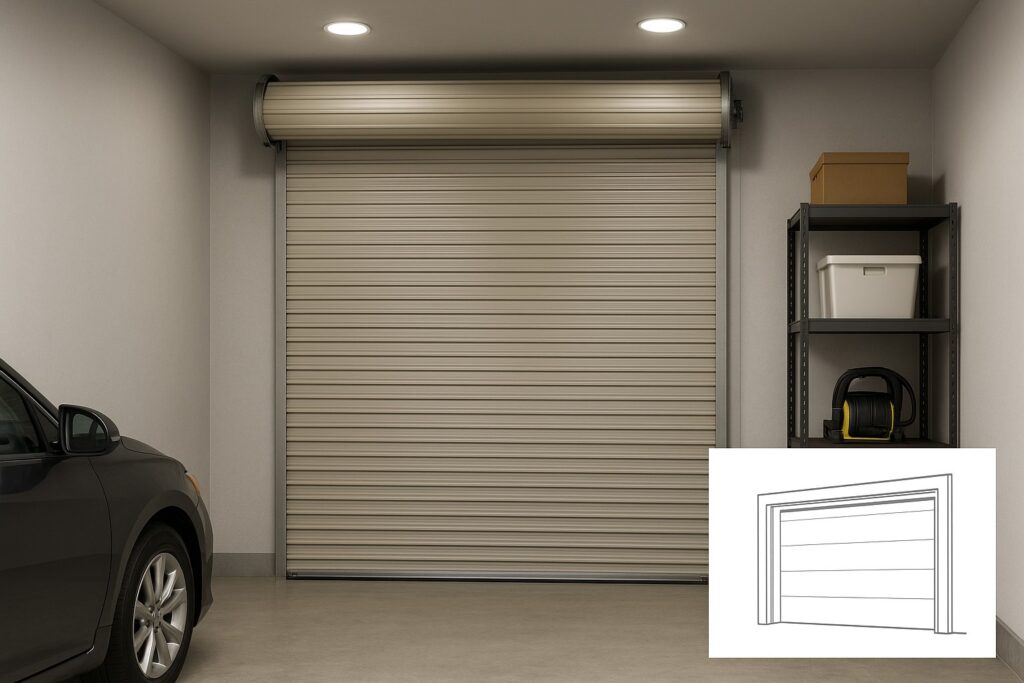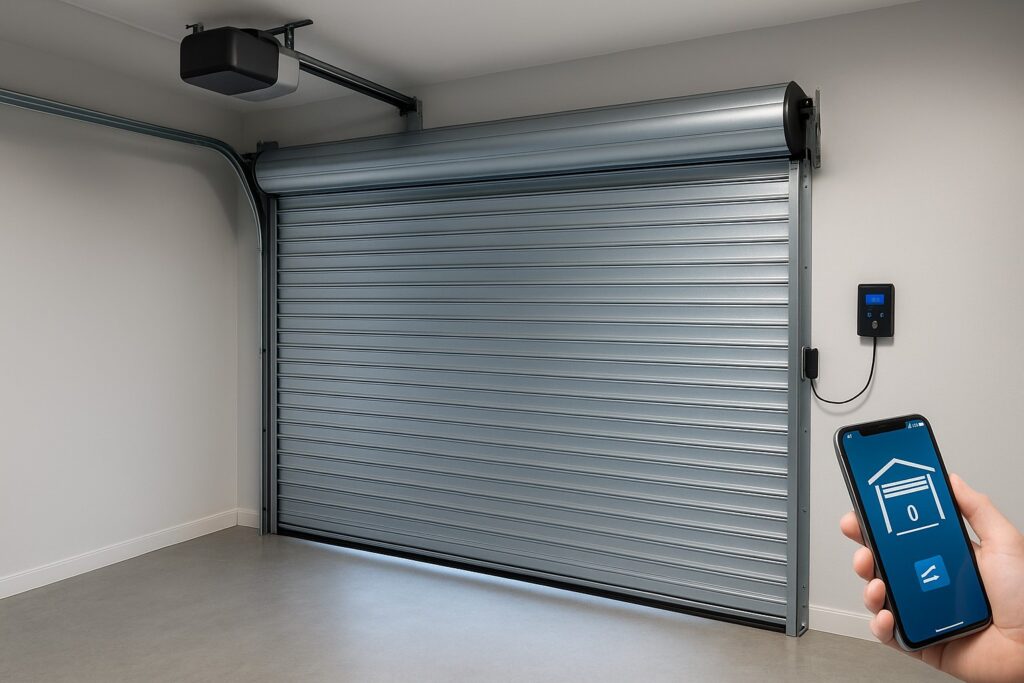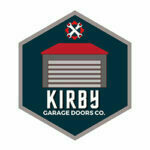10 Things to Know Before Installing a Roll-Up Garage Door

It was a stormy Thursday in Houston when a long-time customer reached out in a panic: their outdated garage door had jammed during a high wind event, trapping delivery vehicles inside a commercial facility. After conducting a quick site check, our technicians at Kirby Garage Doors Co. realized the existing sectional model couldn’t withstand the wind load requirements outlined by the International Building Code. Our recommendation? A steel roll-up garage door with certified wind load compliance, commercial-grade durability, and an automatic chain hoist for seamless operation.
In fact, roll-up garage doors have become one of the most popular upgrades for both residential and commercial applications across Texas, especially in urban centers like Houston, where space efficiency, security, and weather resistance are vital. Whether you’re a homeowner updating your property or a business improving your warehouse, installing the right garage door can save you time, money, and stress.
Before you commit, here are 10 key things you should know about installing a roll-up garage door so you can make a smart, well-informed decision.
1. What Is a Roll-Up Garage Door?
A roll-up garage door (also known as a rolling sheet door or slat door) is constructed from multiple horizontal slats, usually made from galvanized steel or high-grade aluminum that roll into a compact drum or coil above the doorway. This design eliminates the need for overhead tracks, making it ideal for tight spaces, low-clearance garages, and industrial buildings.

Unlike traditional overhead garage doors with hinged panels, roll-up doors are smoother in operation, easier to maintain, and offer versatile types of applications, from light-duty sheds to heavy-duty warehouses. They are commonly used in commercial addresses, storage facilities, distribution centers, and increasingly, modern homes.
2. They’re Built to Last
Durability is one of the greatest strengths of a roll-up door. These doors are typically made of 24-gauge to 20-gauge steel, treated with durable polyester paint to resist corrosion, chipping, and rust even in high-humidity areas like Houston. You’ll find models like the Amarr model features or the Janus model features engineered to meet Florida Building Code and International Building Code standards, with certified resistance to wind load pressure.
With proper installation and basic maintenance, these doors can last 20+ years. You can also opt for models with cam-action devices and easy-adjustment latches to ensure smoother operation and longer lifespan.
3. Great for Commercial and Residential Uses
Think roll-up doors are only for warehouses? Think again. There’s a wide range of garage door models designed specifically for residential standards, featuring aesthetic colors, integrated windows, and compact design options for homes in tight city lots.
Whether you need a light-duty roll-up door for your backyard shed or a heavy-duty steel door for your commercial building, there are product series tailored to meet different field applications, sizes, and budgets.
4. Compact, Space-Saving Design
A roll-up door coils tightly into a square-foot-sized drum, allowing you to fully utilize your garage’s ceiling space. No rails, no folding panels, and no swing-out clearance required. This makes it easier to install storage racks, car lifts, or overhead lighting.
If you own a masonry garage, roll-up doors are ideal because their compact fit integrates easily with brickwork and structural frames without compromising integrity.
5. Insulation and Energy Efficiency Options
Houston summers are hot, and your garage can become a furnace without proper insulation. Many rolling steel doors now offer foam-filled slats, thermal barriers, and environmental controls that reduce heat transfer. Insulated models help regulate internal temperatures and protect items stored in the garage, reducing wear on HVAC systems and cutting down on energy bills.
Need even more thermal performance? Choose an insulated roll-up garage door with high R-values, available in both light-duty and heavy-duty versions.
6. Superior Security Features
Unlike traditional garage doors, roll-up doors are much harder to tamper with. The interlocking slats provide a solid defense against intrusions, while optional locking mechanisms, like internal slide locks or automatic cam locks, make unauthorized access extremely difficult.

For commercial roll-up doors, consider a model with chain hoist operation and certified wind load resistance for maximum safety.
7. Low Maintenance Requirements
Thanks to their simple mechanism, rolling sheet doors have fewer moving parts than traditional garage doors. There’s no need to regularly lubricate track systems, adjust springs, or replace complex hinges.
Most modern models require only periodic inspection, cleaning, and lubrication of the coil and bearings. Choosing models with year warranties and manufacturer support, like the Mueller roll-up door series, can save you even more time and money in the long run.
8. Expert Installation Is Essential
Don’t risk DIY installation when dealing with steel roll-up doors, they’re heavy, technical, and precision matters. Improper installation can lead to poor operation, sagging slats, or even safety hazards.
At Kirby Garage Doors Co., we conduct a complete site check, verify building codes, and ensure that every door is installed with the right hardware, including chain drives, guide rails, and wind locks. We’ll even check for masonry wall integrity, load capacity, and proper anchor points.
9. Know Your Opener and Operation Options
Roll-up doors use side-mounted jackshaft openers or manual chain hoist systems rather than traditional belt or chain-driven openers. You can opt for smart-enabled systems with Wi-Fi access, automatic closing timers, and safety sensors ideal for both residential and commercial use.
Need a quick lift during peak business hours? Choose a high-speed motorized opener for larger industrial doors and reduce loading dock turnaround time.
10. Customization: Panels, Colors, and More
Gone are the days of plain gray metal doors. Today’s roll-up models come in a wide range of colors from matte black to sandstone beige, plus decorative slats, faux wood finishes, and built-in windows.
Manufacturers like Amarr, Janus, and Mueller offer available colors, panel designs, and door models to match your building’s look and code standards. Whether you need a rugged steel door for a shop or a stylish addition to your home’s curb appeal, there’s a roll-up garage door option for you.
How Can Kirby Garage Doors Co. Help You?
At Kirby Garage Doors Co., we specialize in the installation, repair, and maintenance of roll-up garage doors for residential and commercial clients throughout Houston, TX, and surrounding areas. Whether you’re upgrading an old unit or planning a new build, we guide you through every step from site inspection and door selection to final installation and maintenance scheduling.
✔ Certified technicians trained on all major models, including Amarr, Janus, and Mueller
✔ Expert handling of wind load checks, code compliance, and custom options
✔ Emergency garage door repair, chain hoist upgrades, and smart opener installs
✔ Local, reliable service with a satisfaction guarantee
📍 Visit us at: 7747 Kirby Dr, Houston, TX 77030
📞 Call today: (281) 688-2203
Let us help you install a door that’s smart, secure, and built to last.
Frequently Asked Questions (FAQs)
Q1: How long does it take to install a roll-up garage door?
Installation usually takes between 4 to 6 hours, depending on door size, site condition, and opener type.
Q2: Can roll-up garage doors be used in hurricane-prone areas?
Yes, many models are rated for certified wind loads and comply with Florida building code standards.
Q3: Are there custom sizes available for unique garage openings?
Absolutely. Roll-up doors can be fabricated to fit a wide range of dimensions, including non-standard widths and heights.
Q4: What’s the best way to clean and maintain a roll-up door?
Use mild soap and water for surface cleaning and lubricate moving parts every 6–12 months to maintain smooth operation.
